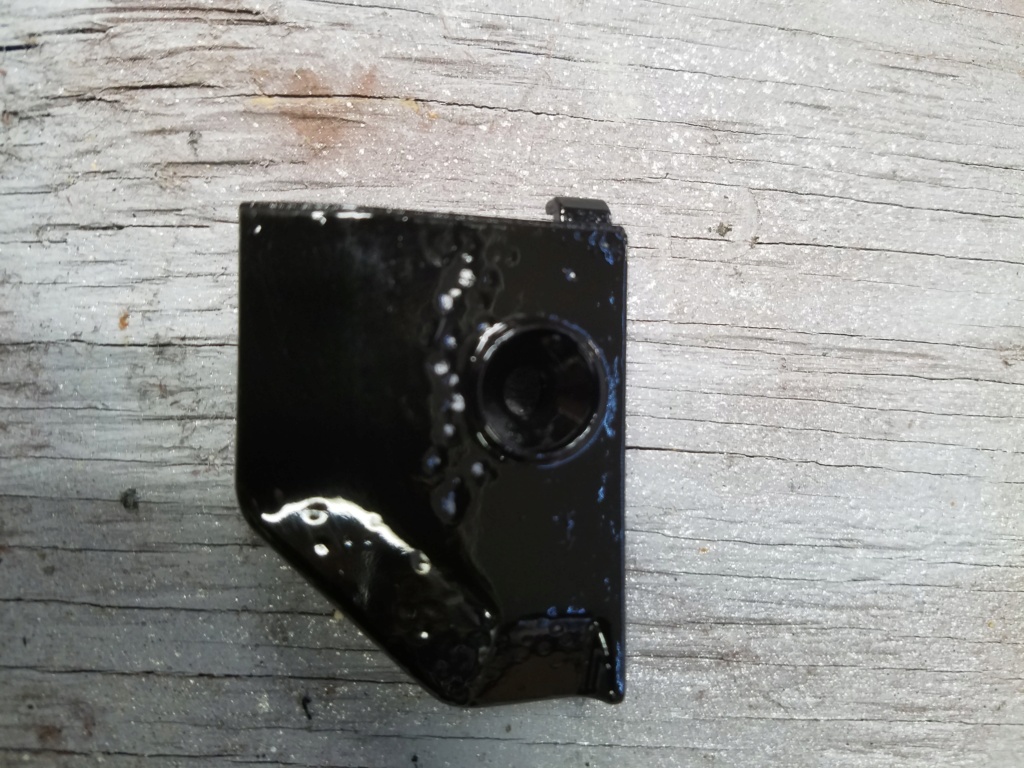1

 Painting and Fisheyes Mon Apr 18, 2022 12:07 am
Painting and Fisheyes Mon Apr 18, 2022 12:07 am
jjefferies
Life time member

Living in California, weird/wonderful, does have its drawbacks. One of which is that air pollution controls have greatly curtailed do it yourself spray painting. In most instances I'm trying to make do with rattle can paint jobs. But this has seen the comeback of an old issue "fisheyes". For anyone not familiar, fisheyes are blemishes in a paint job which causes round spots where the paint because of contamination doesn't cover the target/metal. Here is a small part, the top of the throttle body from the right hand grip displaying fisheyes. The paint being used is rustoleum in a spray can. For anyone not familiar Rust-o-leum is a decent quality commercial enamel paint.

You will notice the small white dots scattered around. My understanding is that these are caused by contamination principally from silicone. When I was shooting paint from my own gun I would compensate for this by adding a small amount of fisheye compound to the paint. Basically contaminating the paint before spraying. But when shooting from a spray can it's no longer possible to add the fisheye material to the paint. BTW, the painted piece was wire brushed till all paint was gone, and then cleaned with acetone followed by lacquer thinner.
So my question does any have suggestions as to how to either clean a piece before painting or how to compensate for silicone contamination. Silicone is often a component of polishes as well as lubricants.
best regards
J.Jefferies

You will notice the small white dots scattered around. My understanding is that these are caused by contamination principally from silicone. When I was shooting paint from my own gun I would compensate for this by adding a small amount of fisheye compound to the paint. Basically contaminating the paint before spraying. But when shooting from a spray can it's no longer possible to add the fisheye material to the paint. BTW, the painted piece was wire brushed till all paint was gone, and then cleaned with acetone followed by lacquer thinner.
So my question does any have suggestions as to how to either clean a piece before painting or how to compensate for silicone contamination. Silicone is often a component of polishes as well as lubricants.
best regards
J.Jefferies











